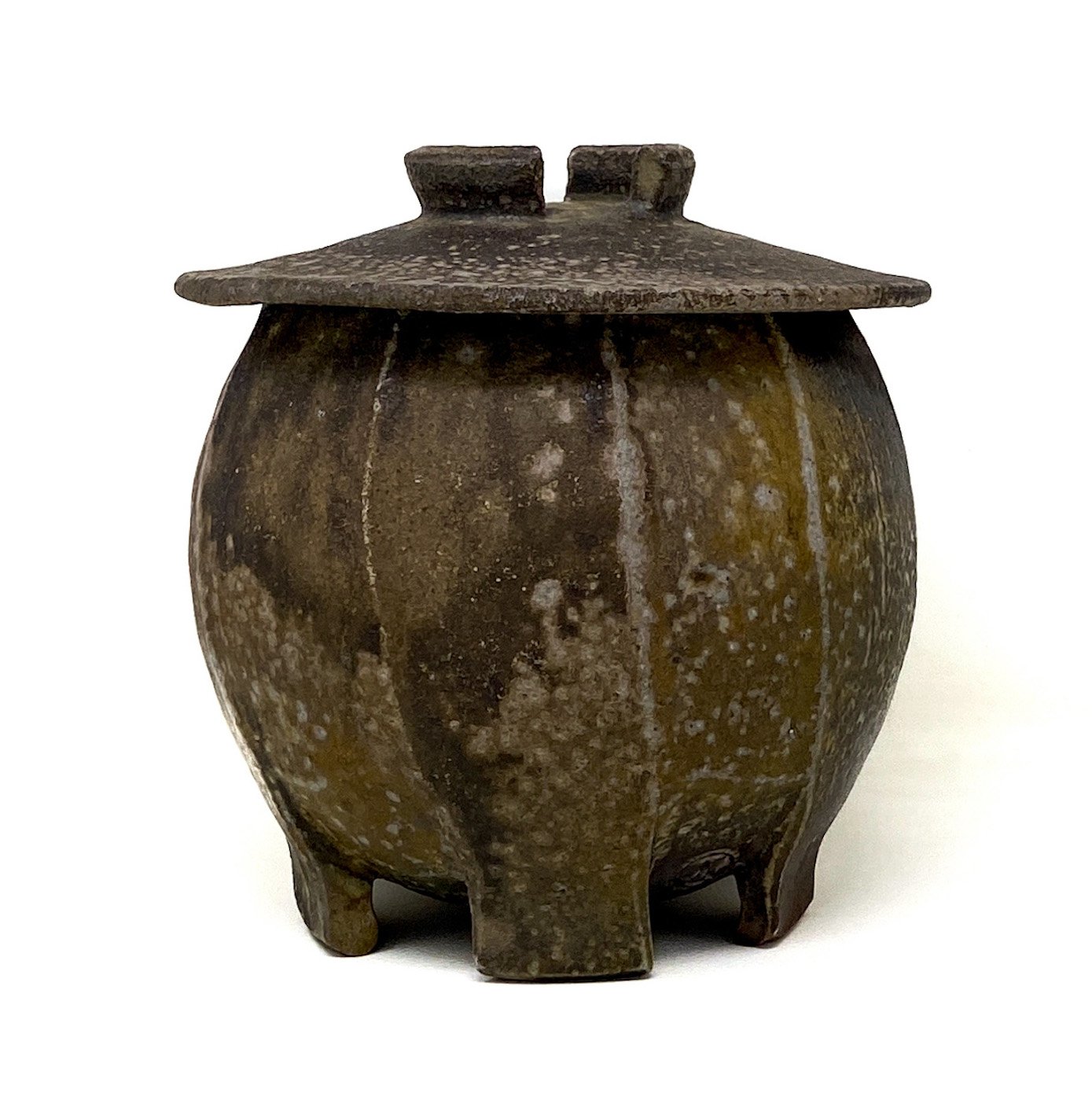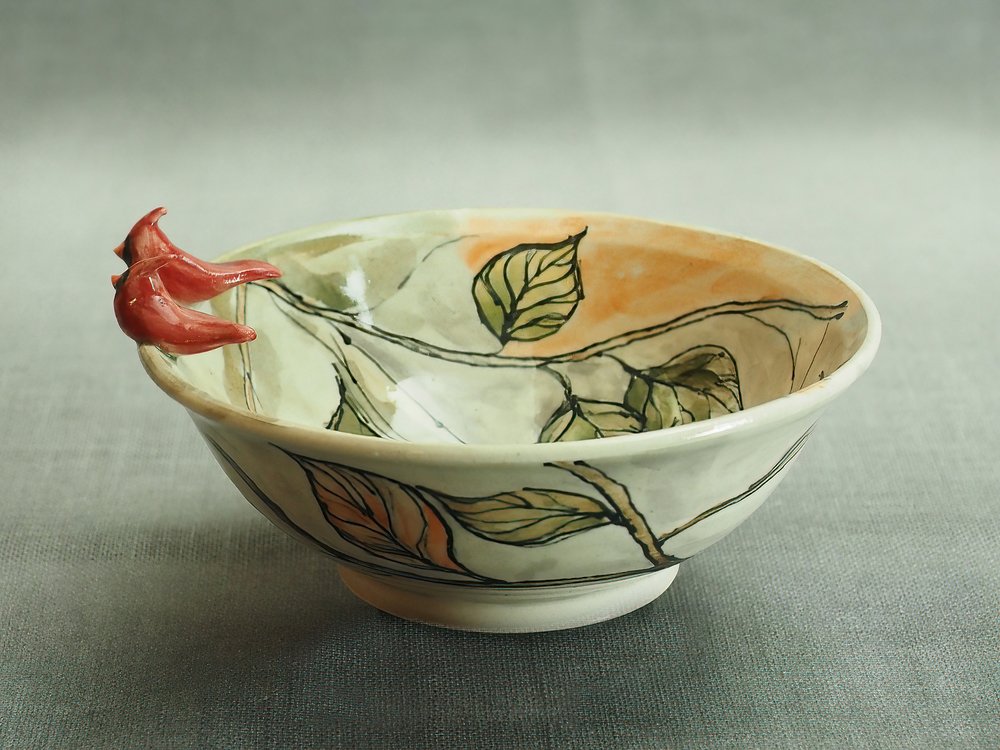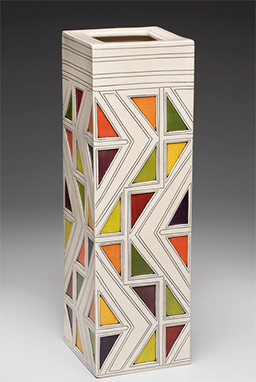© Andrew Linderman
Wheel thrown and altered functional ceramics high fired to cone 8-10. Work is made from high-iron stoneware or porcelain with iron impurities. Pieces are fired in a wood kiln or electric kiln raw or with scratch made glazes.

© Andrew Linderman
Wheel thrown and altered functional ceramics high fired to cone 8-10. Work is made from high-iron stoneware or porcelain with iron impurities. Pieces are fired in a wood kiln or electric kiln raw or with scratch made glazes.
Jackson, GA
2023 Booth #4

© Kyle Osvog
My work is slab built stoneware which I hand carve with elemental, precision, geometric imagery.

© Kyla Erickson
2022 Booth #
I have been making pottery semi-seriously for about seven years. I love the physicality of the process and layers of science and history behind the art form. Like all the best things in life, my work is simple, natural, and a little bit odd. All my work is handmade here in Minneapolis. The pieces are wheel-thrown with stoneware clay and then altered to add a bit of character with loop handles, dimples, and little feet.

© Lee Zimmerley
2023 Booth #59
The stoneware pottery I create is primarily wheel thrown, then hand decorated using additive techniques. My pieces, which are both decorative and functional, are influenced by the Arts and Crafts Movement and its depictions of plants and animals, and I often use my own garden as inspiration!

© Brian Johnson
We create pieces that are often altered through piercing, carving, and unique glazing techniques. We make our own glazes and combine them to best enhance each piece. Our pottery is meant to be used, and used often.
Kats Ceramics
New Brighton, MN
2023 Booth # 50

© Kathy Reinartz
My work is inspired by many aspects of everyday life- architecture, nature, other Artwork etc.
Most of my work is functional but also meant to enjoy the colors, shapes, textures and how it makes one feel.
All work is made in my home studio, from porcelain or stoneware clay, cone 6 oxidation. I use bright colors on my work that should be displayed when not using

© Barbara Hager
Functional, wheel thrown earthenware with polychromatic glazes.

® Rita Morris
We create functional, handmade stoneware and porcelain pieces decorated with imagery from the natural world. Each piece is thrown on the wheel and hand painted with the native flora and fauna of this region. We strive to bring beauty into the simple every day experience through form, function and detail.
Bloomington MN
2023 Booth #64

© Deanne Nash
I create wheel-thrown stoneware or porcelain pottery. The pieces are functional and oxidation fire to cone 6-8. Pieces are meant for everyday enjoyment; the joy of the piece comes from use for display, cooking, or entertaining. The pieces are food and oven safe.

© Jeff Shawhan
Out of fire pottery
Racine, WI
2019 Booth #122
Raku fired ceramics
Natasha Poppe Ceramic Works

© Natasha Poppe
Saint Paul MN
2019 Booth #
Hand built ceramics, functional and decorative, exploring gestural forms and surfaces.
primarily porcelain and raku.
Eau Claire, WI
2018 booth #120B
At heart I am a functional potter. I throw all of my work on the wheel from stoneware clay. After the pot is thrown I frequently add slip texture to create a sense of movement and channels for my glazes to run and flow. Each piece is carefully trimmed to a finished form which is as elegant as it is functional. My glazes are hand brushed and layered to ensure beautiful outcomes which are as pleasing to the eye as they are to the touch. I fire all of my work in an oxidation environment which allows me great control of the temperatures necessary to achieve the work I envision.

©Eric Holey
Prior Lake, MN
2022 Booth #99B
White stoneware / thrown and altered / interior colored with slip and mason stain / cut, carved, and sanded

© Yvonne Asp-Grahn
Minneapolis, MN
2018 booth #67A
I make wheel thrown functional ceramics. I use a white stoneware clay body and fire mid-range temperature glazes. The wares I create are influenced by Japanese Zen traditions that focus on mindful eating.

© Elaine Palmer
Kimball, SD
2018 booth #46A/B
www.Turningleafpottery.com
I make pieces of pottery from earthenware clay and then fire the pieces to temperature. During the second firing, I take the pieces out of the kiln with long tongs and quickly lay strands of horse hair or feathers on the piece so the heat from the pottery burns the carbon into the clay body. I use several different techniques in layers to color the piece and give it texture.

© Deb Burckhard
Fresh Mud Pottery
Minneapolis, MN
2018 booth #117
Being a full-time studio potter is my second career. After raising four sons I took my first clay class and at age 50. I quickly determined that I wanted to work with clay for the rest of my life. I love making beautiful and functional pieces for peoples’ homes.
I paint slabs of clay with colorful under-glazes. Over the slab I attach a thin, stencil cut sheet of clay. I draw and texture on these slabs. The form is then built. After bisque firing I apply black stain and wipe it off leaving the incised lines and texture black. A clear glaze finishes the piece.
I use various slab building techniques to construct my pieces. Over colorful slabs I applique a pierced layer of semi-porcelain clay. I do line work and incising and then bisque fire. After the bisque I cover the piece with black stain and wipe it off. A food safe clear glaze goes on and I fire the work to cone 6 in oxidation.

© Julia Timm


© Peter Heglund

© Caitlin Dowling
I work predominantly in stoneware, both white- and red-bodied clay, and fire in a mid-range (cone 5-6) oxidation atmosphere. I often alter the shape, surface and feel of a piece after throwing it on the wheel and use a variety of things to achieve color in my work: underglazes, colored slips, mason stains, and glazes. I also specialize in alternative firing techniques, particularly horse hair raku. First used by the Navajo Native Americans, this technique epitomizes to me the coalescing of function and artistic value while creating something lasting and cherishable. Due to the many uncontrollable variables inherent in the horsehair technique, exact replication is impossible. Thus, each piece is truly unique.
Eagan, MN
2023 Booth #70
Wheel thrown stoneware, ribbed slip design, multiple sprayed overlapping glazes

© Steven Showalter
Chicago, IL
2022 Booth #15
Handbuilt, carved, and painstakingly glazed ceramic sculpture and wall sculpture. Drawing on architectural influences, fabric design & modern ceramics, these elements mix to create Modern Artifacts.

© Gregory Story